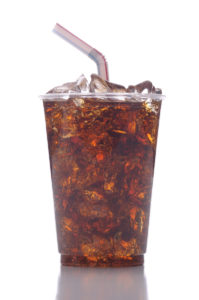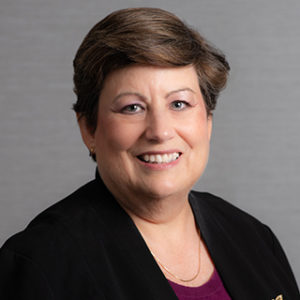Soda Taxes: A New Trend Across the States
Seattle is the latest in a string of major cities that have proposed and enacted a soda tax since November 2016.
As a Chicago and Cook County, IL resident, the sweetened beverage debate hits home for me. I don’t drink much soda any more – but do enjoy other sweetened beverages – namely fruit juices. And an occasional margarita. And yes – these will be subject to the new tax.
A little history on the Cook County Sweetened Beverage Tax:
Cook County isn’t the first locality to impose a sweetened beverage tax. In fact, the City of Chicago has had a 3% tax on soft drinks since 1993. This tax is a retail tax and is collected by the retailer. Under Illinois law which determines the Chicago definition, soft drink includes sweetened beverages that have less than 50% natural fruit juice.
Starting in 2015, Berkeley, CA imposed a 1 penny per ounce sweetened beverage tax that is imposed on the distribution of sweetened beverages into the City. Philadelphia also passed a 1.5 cent per ounce tax that was effective January 1, 2017. This tax has been challenged unsuccessfully but an appeal is pending to the Pennsylvania Supreme Court. This tax is also on the distribution of sweetened beverages into the City.

On November 8, 2016, four additional jurisdictions approved sweetened beverage taxes through ballot measures – San Francisco, Oakland and Albany in California all approved a one-cent per ounce tax and Boulder, CO raised the rate to two-cents per ounce.
Then on November 10, 2016, the Cook County Board voted to impose its sweetened beverage tax at one-cent per ounce on the retail sale of a taxable beverage effective July 1, 2017. There is a broad definition of what is a sweetened beverage – including juices that contain less than 100% natural fruit juice (which differs from the Illinois and Chicago definition).
It is also a tax on the distribution of sweetened beverages in the County. However, the ultimate incidence of and liability for payment of the tax is to be borne by the purchaser of the sweetened beverage. What this means is that it is different from the other taxes I discussed above.
It is a tax that is collected and remitted to the County by the distributor on the sale to the retailer but the retailer is required to directly pass the tax through to the consumer. And if it isn’t included, the purchaser ultimately owes it! It is also a violation for any distributor or retailer to fail to include the tax imposed in the sale price of the sweetened beverage, syrup and/or powder or to otherwise absorb the tax, unless otherwise required by law.
Retailers are required to include the SBT in the advertised price but they have discretion as to how to do that. They also have discretion as to if they want to separately list the tax on the receipt to the purchaser. But they are prohibited from absorbing the tax.
All this seems quite contradictory, doesn’t it? More is in Regulation 2017-2. And then to complicate it even more, the state of Illinois has issued GIL ST 17-0019 which states that the Illinois sales tax (ROT/UT) does NOT include the SBT in the tax base. This puts an incredible burden on the retailers – which include not only grocery stores but every restaurant and bar in the County.
As I mentioned, a lawsuit was filed challenging the legality of the tax. You can see the Circuit Court’s opinion for more details. It was interesting to sit through the arguments as well as the judge’s announcement of the finding. I think he was even surprised by how many people were in the courtroom for the decision!
Judge Kubasiak opened his comments with an appreciation for the public involvement and interest in the case. In his ruling for the County to dismiss the case, he urged the County to take into account the effort that the retailers and distributors will need to expend to start collecting the tax when deciding on the effective date. The temporary restraining order which prohibited the County from enforcing the tax was dissolved at the time of the decision.
Unfortunately, the County didn’t comply with this request. The decision was announced around 1:45pm on Friday July 28 and the tax was effective August 2. A request to stay the dismissal of the temporary restraining order was denied.
I thought I would try to explain why this tax is going to be so hard to implement from a systems point of view. During the press comments after the decision, questions were raised as to how long it would take the retailers and the software companies to comply, and IRMA’s response was that they are estimating 4-6 months. The press couldn’t believe it. Of course, I wanted to share my thoughts – and here we go!
In the U.S., sales tax is typically collected from the consumer by the retailer and it based on a percentage of the selling price. Sales tax is not included in the price of the product sold but rather is added to the price at the time of the sale and differs based on the location of the sale and delivery. Distributors and wholesalers rarely have a tax collection responsibility as their sales to retailers qualify for the resale exemption. So here are the challenges at a high level.

What I just described above is what the retailers and distributors have to do in their systems. We haven’t even talked about what the tax software companies need to do to add this special tax with all its rules into their calculation logic, which includes tax rates with effective dates, tax authorities, tax type, tax label/messaging, and even how to exclude it from the sales tax calculation. They also then have to work with the various POS system partners to figure out how to update the data file that is passed to the POS system in a way that it can be used.
In an effort to assist retailers, the County did add a line to Ruling 2017-2 – “Understanding that distributors and/or retailers may need additional time to program their POS systems to allow for the tax to be reflected in the menu/advertised/shelf sale price, distributors and/or retailers will have an additional 6-month period, until January 1, 2018, to comply with the display requirements laid out in this regulation.” But this doesn’t delay the need to calculate and pay the tax.
Is your head spinning yet? Mine is every time I look at something related to this. The County has issued some rulings and FAQ’s so be sure to read all these if you are subject to the tax. And retailers – don’t forget to take your floor inventory tonight (August 1) if you haven’t sold out of everything yet. You will need to file and pay the tax due on all inventory that wasn’t taxed. This will be due by September 20. But as long as you buy from registered distributors you won’t have to register and regularly file returns.
This is still fluid and we hope our friends at Horwood, Marcus & Berk who are representing IRMA and the retailers are successful in fighting for a new temporary restraining order and in repealing or at least getting more clarification to this law. It is very different from all the other sweetened beverage taxes around the county and imposes a significant burden on the retailers in particular.
Know that we are tracking this and are here if you have questions or need help getting something in place. Just drop us an email or give us a call.
UPDATE 1: As of late August 1, 2017, an appeal has been filed but no restraining order, so the tax is in effect.
UPDATE 2: Cook County attorneys are seeking $17 million in damages from IRMA, claiming financial damage as a result of the delay caused by the temporary restraining order. The motion was withdrawn shortly thereafter on August 8, 2017.
UPDATE 3: As we talk about above – this isn’t easy. Three major retailers – Walgreen’s, McDonalds and 7-Eleven have been hit with class action lawsuits for incorrectly charging the tax. I expected this would happen. Walmart also charged the tax on a sale in an Indiana store in error. The County didn’t provide for protections and didn’t give retailers sufficient time to roll out the changes to the registers. We’ll keep an eye on this. The lawsuit against McDonalds subsequently has been dismissed.
UPDATE 4: The U.S. Department of Agriculture has threatened to withold in-state funding unless Cook County changes the way it applies the sweetened beverage tax to purchases using food stamps. At issue was the fact that the county allowed retailers to give refunds to SNAP (Supplemental Nutrition Assistance Program) recipients who purchased sweetened beverages if the retailers’ systems were not set up to exempt purchases by SNAP recipients at the point of sale. The USDA indicated that it is not permissible for retailers to charge the tax to SNAP recipients at the point of sale, then offer a refund. Cook County has subsequently revised the rules to prohibit retailers from offering refunds on the sweetened beverage tax to SNAP recipients. Retailers must program their systems to not tax SNAP purchases on sweetened beverages or provide a manual override to prevent the tax from being charged.
UPDATE 5: An emergency motion for a temporary restraining order was filed in Cook County against the sweetened beverage tax based on the uncertainty of how to collect. This is based on the 3 class action lawsuits filed within the first week of enforcement, the U.S. Department of Agriculture, Food and Nutrition Service notification that the process for handling SNAP sales violates its laws (putting at risk $87M in federal assistance) and the latest – concern from the Illinois Liquor Control Commission that the tax could be in violation of the Illinois Liquor Control Act. The Appellate Court has five days to rule on the emergency motion.
UPDATE 6: On August 18, 2017, lawsuits were filed against Jewel-Osco and Subway for their implementation of the sweetened beverage tax.
UPDATE 7: The emergency motion for the temporary restraining order was denied. Briefs for the appeal are due in mid-September.
UPDATE 8: The Cook County Board is expected to consider repealing the sweetened beverage tax the week of September 11.
UPDATE 9: A measure to repeal the sweetened beverage tax was introduced to the Cook County Board on September 13. The Board voted to send the matter to its Finance Committee, whose next meeting isn’t scheduled to take place until October.
UPDATE 10: On October 6, 2017, Cook County Commissioner Sean Morrison announced that he had secured the 11 votes to repeal the sweetened beverage tax and override a veto. The Finance Committee will vote on the repeal on October 10, 2017. If the repeal passes, the sweetened beverage tax will end on December 1, 2017.
UPDATE 11: On October 10, 2017, the Finance Committee voted 15-1 to repeal the sweetened beverage tax. The repeal of the tax still faces a full Cook County Board vote, which is expected to take place Wednesday, October 11.
UPDATE 12: On October 11, 2017, the Cook County Board of Commissioners voted 15-2 to repeal the sweetened beverage tax. The Cook County Sweetened Beverage Tax will end on December 1, 2017.
UPDATE 13: Cook County has provided guidance to retailers and distributors regarding the close-out process for the Cook County sweetened beverage tax. The last tax returns/payments will be due on December 20, 2017. In the case that on December 1, 2017 there is unsold product on which tax was previously remitted, Cook County has provided guidelines for how to handle it. To see the guidelines and to get the necessary forms, visit the Cook County Sweetened Beverage Tax webpage.
 About the Author:
About the Author:Diane L. Yetter is a strategist, advisor, speaker, and author in the field of sales and use tax. She is president and founder of YETTER Tax and founder of the Sales Tax Institute. You can find Diane on LinkedIn and Twitter.